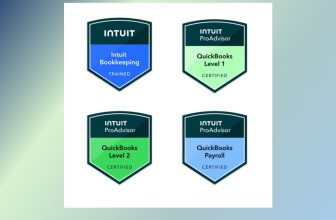Ever wondered why someone seemed interested in your services but didn’t become a client? Or why building up your client base is tougher than you had expected?
You’re not alone. Most accountants haven’t been shown how prospective clients actually make decisions. And it doesn’t matter whether they find you online, on LinkedIn, on social media, through a paid ad, a networking event or even a personal introduction.
So let’s demystify it. And in so doing I hope you’ll better understand why I have been banging on for years about the wider skills accountants need beyond the accountancy services that clients need from you.
Today the focus is on one of the many skills you need to build a practice that goes beyond the ability to produce a set of accounts and tax returns.
Some might call it ‘selling’; I prefer to think of it as learning how to help clients buy the services they need.
Here’s a classic 10-step process adapted for how people buy from accountants. I’ve made it very specific to help you engage more of the prospects that express interest in your accounting services; and so that you can increase the numbers that become clients on your terms. All without you having to do anything pushy or salesy.
1. Connect and introduce yourself
This could be via a message on LinkedIn, a reply to an enquiry, or a “nice to meet you” after someone recommends you.
Your website needs to do this too. If it doesn’t mention YOU or let strangers learn something about YOU, only a minority of those who find your website will call or email.
Look at it from their perspective. Who are they connecting with?
The point is: You’ll generally get off to a better start by being warm, human and curious.
2. Clarify what they’re thinking and feeling
They may say they want “an accountant”, but often they’re feeling anxious, frustrated, or confused. They may not even understand exactly what accountants can do.
However they found you, your first job is not to quote a fee. It’s to be curious and interested to find out what’s really driving the enquiry?
3. Help them realise what they need
Do they need an accountant, a bookkeeper, a financial adviser or a tax adviser? Or more than one perhaps?
Sometimes they ask for help with bookkeeping, but what they really want is clarity. Sometimes it’s “my accountant retired”, but really it’s “I was never sure they had my back”.
Help them join the dots between what they’re saying and what they actually need. They may tell you what they didn’t like about their previous accountant and you can assure them that you are different.
Because you are different you should also find out what they DID like about the service they got from a previous accountant.
Better to address anything they liked that you don’t normally do. For example, many clients appreciate getting help to budget for future tax payments and/or being reminded of imminent tax payments – even though you told them well in advance of the amounts due.
4. Pitch both the emotional and rational outcome
Your ability to ‘pitch’ your services 1-2-1 in a more compelling way than other accountants is key here. ideally you can hit both the emotional and the rational factors.
Instead of jumping straight to “yes, we can prepare your accounts and do your tax return”; ask relevant questions so that you can address the emotional side of what’s on their mind. For example: “We can ensure you’ll stop waking up at 4am worrying about cashflow”.
Once they feel like you “get them”, now is the time for logic. It’s where you explain what they can expect from you both generally and especially as part of your ‘onboarding’ process. You’re giving their brain the reassurance to back up what their heart already wants.
5. Provide some proof
Still part of the ‘Pitch’ process is the need to evidence that you’ve helped other clients like this prospect. “That reminds me of a client who was in exactly your situation last year…”; or maybe just “a very similar situation” 😉
Regardless of whether the prospect came from a cold ad or a warm intro, a bit of relatable proof goes a long way to buildng rapport and confidence.
6. Present your pricing as fair to them and to you
These days you’re taking a big risk if you cannot quote at least a ball-park figure as part of your pitch. There are two reasons for this.
The first is that many of us expect our advisers to be able to quote fees promptly. Unless a situation is very complex, an ability to immediately give some idea of your fee quote evidences a degree of experience and expertise.
The second reason you need to be able to do this is because it’s what more of your competitors are doing and your prospect may choose one of them rather than wait a few days to get your fee quote.
This all means that you need to know what information to gather that will impact your quote. And also the caveats that it’s only fair to mention too.
7. Keep showing up and adding value
This is relevant if a prospect doesn’t make an immediate decision – perhaps because they are talking to other accountants?
If your prospect is active on LinkedIn then this is where your presence here comes into its own – you can use Linkedin to stay on your prospect’s radar without hassling them. But the principle also applies if you prefer to follow up by email or via other online platforms.
Send a helpful link. Mention something useful you discussed. Show that you’re interested, not just following up to “close a deal”.
8. Reduce the risk
People worry about making the wrong decision. You can calm that concern by offering a short call, a no-obligation review, or just a friendly “let’s chat”.
Wherever they came from, the more you can reduce any pressure they might feel, the more likely they’ll move forward and choose to work with you.
Some accountants spell out, up front, how the onboarding process works from a new client’s perspective. If you do this, make clear that’s it’s part of your usueal process and shows how client-centred you are. Only a minority of accountants evidence this up front and yet it’s a really helpful way to reduce any perceived risk of engaging your services.
9. Remind them of the emotional result
As they edge closer to saying ‘yes’, bring it back to them. “This is really about giving you more headspace and peace of mind, isn’t it?” A gentle reminder like that helps cut through any last-minute dithering.
10. Make it easy to say ‘yes’
Your “offer” might simply be: “Let’s get started with a short onboarding call.” Or “Shall we pencil in a time to run through things next week?” It’s not about discounts. It’s about clarity, comfort and momentum. It’s about making it easy for them to say ‘yes’.
Whatever channel your prospects come through – LinkedIn, search, ads, networking, marketing, referrals – they all go through some version of the 10-step journey I have explained here.
Skip any of the steps and you risk confusion or hesitation. Follow them, and you give people a clear path to saying ‘yes’.
And if this all feels refreshingly doable, but not something you’re doing consistently, I’m delighted.
If you’d like to discuss how you might support your transition to this approach remember that I mentor accountants who want to win more of the right clients, in a way that feels natural and comfortable. We focus on what works in real life, not sales scripts or marketing fluff.
Fancy a chat to see if we’d be a good fit? Or am I reaching too fast to get a ‘yes’? 😉







